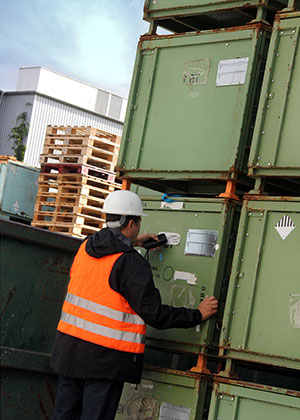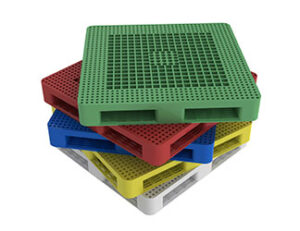What is Container Tracking?
What is a Container Tracking System?
How Does Container Tracking Work?
Four Ways Returnable Container Tracking Boosts Your Bottom Line
1. Increase Supply Chain Visibility
2. Improve Customer and Partner Relationships
3. Automate More
4. Reduce Your Carbon Footprint
Don’t Overlook This Critical Element of the Supply Chain
Controlling RTI Costs May Be Easier Than You Think
Why is returnable container management important? Shrinkage from returnable transport items increases costs if not given proper attention.
What is a Returnable Container?
Manufacturers use returnable containers to move finished goods or materials used in production. Also called returnable transport items (RTI) these can include pallets, crates or racks.
The fact they’re reused makes them a valuable asset. Every time a returnable transport item returns, their value increases. So, losing one impacts the company in replacement costs.
Also, lack of a container tracking system increases labor costs. First, it requires a manual tracking process, which wastes time. Plus, you’ll pay to have a backup supply on hand to compensate for missing or late containers.
Thus, a system to track the return of RTIs produces significant cost-savings. Once a tracking system is in place, a decrease in shrinkage is within reach. If these RTIs are not currently listed in a tracking system, why not?
How to Track Returnable Containers
It may seem complicated to develop a system for returnable container management. But, technology can make the job easier.
Treating your returnable transport items as assets can help with shrinkage control. An RFID system is one possible solution to container tracking.
An RFID tag consists of a tiny chip and antenna called an integrated circuit. This tag may also be part of a label attached to or inserted in containers such as bins & pallets.
But hardware is just part of the solution. RFID software, or middleware, processes and stores the information collected from the tag.
Container tracking using RFID collects real-time data including location, status, condition and cost. Regular reporting can reveal any loss that’s not accounted for.
Backed by data, companies can address the reasons for the shrinkage. For example, damage, loss or theft.
Discovering the cause becomes a much easier task, saving labor and inventory costs. Plus, it aids in preventing future losses by highlighting areas for improvement.
Adding visibility to returnable containers can reduce costs and prevent production delays. Real-time technology solutions are the key to optimizing the supply chain. The question is, can you afford not to?


